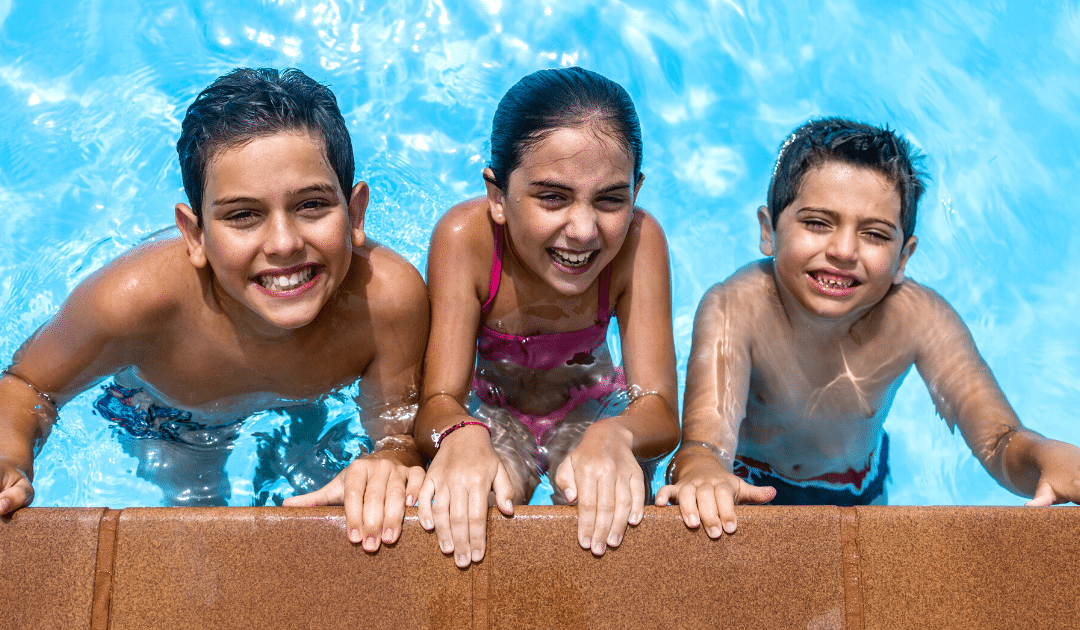Summer is the perfect time for outdoor adventures. Whether you like hiking, biking, swimming or camping, there are plenty of activities to enjoy and places to explore.
While we have fun, it’s also important to remember that sometimes our outdoor excursions come with unexpected risks. From weather to wildlife encounters, make sure you and your family take the right precautions to stay safe. Follow these tips as you enjoy the great outdoors this summer.
Tips for Water Safety
In the U.S., 11 people die from drowning each day, according to the CDC. Children ages 1-4 are at the greatest risk, but drowning is also the second leading cause of accidental death among children ages 1-14.
These tragedies can be easily prevented with simple pool safety and water safety measures.
-
- Never swim alone. If possible, swim in the presence of a lifeguard.
- Teach children to swim. Even toddlers can learn water survival skills, according to the American Academy of Pediatrics. But remember that swim lessons do not guarantee your child can protect himself/herself from drowning.
- Designate a water watcher whenever your child is in the water. Avoid distractions, such as from phones. Drowning can happen in an instant.
- Don’t let children play around pool drains or suction fittings.
- Learn CPR in case you need it.
- Wear lifejackets if on a boat.
- Remember that swimming in a pool is different from swimming in a lake or in the ocean. There are currents and undertows.
- Don’t drink alcohol while swimming.
- Pool Safely is a national public education campaign. Take the Pool Safely Pledge and get a free downloadable safety kit.
Tips for Hiking Safety
Whether it’s a national park or a local trail, hiking is a popular way to connect with nature. Making the right preparations will help ensure that you can enjoy the scenery without worrying about injury.
-
- Know exactly where you are going. Consult with experts who have been there on what you need.
- Check the weather forecast and then recheck it. Bring any additional supplies you will need in case the weather turns.
- Do not hike alone. Travel with someone else, and if you’re going to a remote area, try to travel with a small group
- Know the nearest ranger station and the number in case you need help.
- Do not go into an area marked closed.
- Leave a copy of your itinerary with a trusted friend or family member. Include details such as your destination, the timeframe of arrival and departure, phone numbers of people you are with, specific trails and campgrounds, and even the car you will be driving. This will help in case you are lost.
- Pack the essentials. These include a first aid kit, compass, flashlight, matches, knife, food, water, toilet paper, duct tape, trash bag, whistle, bug spray, sunscreen, and a solar charging power source.
- Stay hydrated and know the signs of heat exhaustion. Infants and young children, as well as people over age 65, are at the greatest risk.
- If taking your dog on a hike, make sure he/she is protected against fleas and ticks. Bring water for your dog and take care that he/she does not get overheated.
Tips for Camping Safety
Being close to nature means that many of the hiking safety tips, above, will apply. In addition, you’ll want to take these added precautions.
-
- Arrive early so you can make camp before dark. Give yourself two hours of daylight to set up camp. Learn your campsite in the daylight so you have an idea of where things are before dark.
- Don’t pitch your tent near the tallest trees in case of a lightning storm.
- Build campfires in a safe area, away from trees, bushes, and other flammable objects. Beware of post-fire embers.
- Do not leave food or garbage in the open.
- Never approach or feed wildlife.
- Know that If animals feel cornered, they could bite, scratch or attack. Wild animals may transmit rabies.
- Practice good hygiene. Wash hands before handling food.
Tips for Bicycle Safety
Biking is great exercise and another fun family activity. Hit the road safely with these tips.
-
- Many states require bicycle helmets for children under 18. But helmets are good protection for everyone.
- Dress in bright colors so you will be seen.
- Wear sunglasses to protect your eyes and sunscreen to protect your body.
- Never ride with headphones or earpieces. You want to be able to hear what’s going on around you.
- Choose routes that have wide roads or bike lanes. Observe all traffic laws and be aware of drivers.
- Bring a patch kit in case you need to repair a tire or tube.
- Stay hydrated. Bring water with you.
- Carry some emergency cash in case you need it.
Whether you are traveling by car, plane, or RV always remember to travel safe and plan ahead of your adventure.
This article is furnished by California Casualty, providing auto and home insurance to educators, law enforcement officers, firefighters, and nurses. Get a quote at 1.866.704.8614 or www.calcas.com.
- Graduation – When to Remove Your Child from Your Auto Policy - May 18, 2023
- How to Prevent Catalytic Converter Theft - May 17, 2023
- How Much Does Home Insurance Cost? - May 17, 2023

